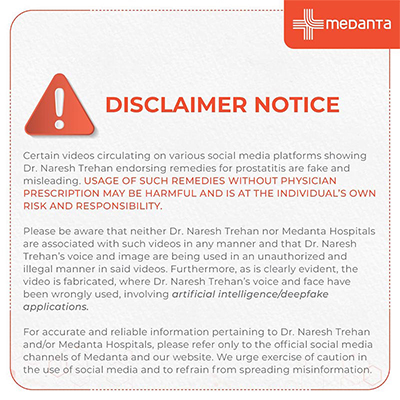Viral vs Bacterial Infections: Know the Key Differences

TABLE OF CONTENTS
- Understanding Bacteria and Viruses
- Symptoms of Viral and Bacterial Infections
- How Are Viruses Different from Bacteria?
- How to Differentiate Bacterial and Viral Infection?
- Treatment of Bacterial Diseases and Viral Diseases
- Can a Viral Infection Turn into a Bacterial One?
- How to Prevent Bacteria vs Viral Infections?
- Final Thoughts
- FAQs
Ever had a nasty fever and wondered whether it's a virus or bacteria causing all the trouble? Knowing the difference between viral and bacterial infections is crucial—especially when it comes to treatment. While both can make you feel miserable, they’re caused by entirely different microorganisms and need different treatments.
Let’s clear up the confusion between bacteria vs viral infections, how they spread, how to tell them apart, and what works (and what doesn’t) for treatment.
Understanding Bacteria and Viruses
Before diving into bacteria infection vs virus, let’s quickly break down what these two are.
Bacteria
Bacteria are living microorganisms that can survive in various environments—inside your body, on surfaces, in water, and even extreme conditions like hot springs. They multiply by dividing and can live independently.
Not all bacteria are bad. Your gut, skin, and mouth are home to trillions of beneficial bacteria that help with digestion, immunity, and even mental health.
Harmful bacteria, however, cause infections like strep throat, pneumonia, and urinary tract infections (UTIs).
Viruses
Viruses, on the other hand, are non-living infectious agents that require a host to survive. They invade your body’s cells and take over their machinery to reproduce.
Common viral infections include the flu, common cold, and chickenpox.
Unlike bacteria, viruses don’t respond to antibiotics—meaning tablets for bacterial infection won’t work for a virus.
Symptoms of Viral and Bacterial Infections
Flu is killing more people than the COVID-19 virus. Understanding the symptoms of bacteria infection vs virus can help you determine when to seek medical care and what treatment might be necessary. While some symptoms overlap, key differences can help distinguish between the two.
Viral Infection Symptoms:
Fever: Usually mild to moderate, though some viruses (like flu or COVID-19) can cause high fever.
Fatigue and body aches: Common in viral infections like the flu.
Runny or stuffy nose: More typical in viral infections, like the common cold.
Cough: Usually dry or with clear mucus.
Sore throat: Often accompanied by redness and irritation but without white patches.
Duration: Viral infections typically improve within 5-10 days, though some (like mononucleosis or COVID-19) can last longer.
Bacterial Infection Symptoms:
Fever: Usually higher and persistent (above 102°F or 39°C).
Localized pain or swelling: More common in bacterial infections like strep throat, ear infections, or bacterial pneumonia.
Cough: Often produces thick, yellow, or green mucus (possible bacterial pneumonia or bronchitis).
Sore throat: Often comes with white patches on the tonsils (strep throat).
Skin infections: Bacterial infections like cellulitis cause redness, warmth, and swelling in the affected area.
Duration: Bacterial infections can linger or worsen without treatment, sometimes requiring tablets for bacterial infection like antibiotics.
If symptoms worsen after 10 days or include difficulty breathing, severe pain, or very high fever, seek medical attention. Some viral infections can turn into bacterial infections, requiring antibiotics.
How Are Viruses Different from Bacteria?
Now, let’s break down how are viruses different from bacteria in a simple comparison:
Feature | Bacteria | Viruses |
Size | Larger (can be seen under a light microscope) | Much smaller (require an electron microscope) |
Living or Non-living? | Living, can survive and multiply independently | Non-living, needs a host cell to replicate |
Structure | Complex with a cell wall and internal components | Simple, made of genetic material (DNA/RNA) inside a protein coat |
Reproduction | Divide on their own (binary fission) | Hijack host cells to reproduce |
Examples of Diseases | Strep throat, Tuberculosis, UTIs | Flu, Common cold, HIV, Chickenpox |
Treatment | Treatment for bacterial diseases includes antibiotics | Antivirals for some, but mostly symptom management |
How to Differentiate Bacterial and Viral Infection?
Figuring out how to differentiate bacterial and viral infection can be tricky, but here are some general signs:
Symptom | Bacterial Infection | Viral Infection |
Fever | Often high and persistent | Mild to moderate, sometimes comes and goes |
Onset | Gradual | Sudden |
Sore Throat | White patches on tonsils (common in strep throat) | Red, inflamed throat with no white patches (common cold, flu) |
Cough | Thick, yellow or green mucus (possible bacterial pneumonia) | Dry or clear mucus (flu, common cold) |
Duration | Longer (can worsen over time) | Usually improves within a week |
Always consult a doctor rather than self-diagnosing. Some infections can start as viral but turn into bacterial (like sinus infections).
Treatment of Bacterial Diseases and Viral Diseases
Treatment depends on whether it is bacterial or viral.
Treatment for Bacterial Diseases
Treatment for bacterial disease usually involves antibiotics to destroy bacteria or stop bacteria from growing. The doctor gives tablets for bacterial infection depending on the bacteria type.
Some common antibiotics:
Amoxicillin (used for ear infections, and strep throat)
Azithromycin (used for respiratory disease)
Ciprofloxacin (used for urinary infection)
Misuse of antibiotics (using them to cure viral infections) results in antibiotic resistance—bacteria become stronger and more difficult to kill.
Treatment of Viral Infections
Antibiotics won't cure viral infections. Treatment is to relieve symptoms:
Rest and fluids to let your immune system fight the virus.
Painkillers (such as paracetamol) for fever and aches.
Antiviral medication (for certain viruses such as flu)
Can a Viral Infection Turn into a Bacterial One?
Yes! Occasionally, a viral infection weakens your immune system so that bacteria can grow more easily. That's why some people with a cold develop bacterial sinusitis or pneumonia.
Red Flags That Can Signal a Secondary Bacterial Infection:
Symptoms worsen or linger beyond 10 days.
High fever (over 102°F or 39°C) that lingers.
Shortness of breath or laboured breathing.
How to Prevent Bacteria vs Viral Infections?

Preventing infection—viral or bacterial—comes down to good hygiene, a healthy immune system, and wise lifestyle decisions. Although bacteria vs viral infections are transmitted differently, the prevention strategies for both are very similar.
1. Wash Your Hands Often
Wash your hands often with soap and water, particularly before meals, after using the bathroom, and after sneezing or coughing.
Use hand sanitiser if soap and water are not available.
Cover your nose and mouth while coughing or sneezing (preferably using your elbow and not your hands).
Avoid touching your face since germs and bacteria can travel through the eyes, nose, and mouth.
2. Vaccination
Vaccines can protect against deadly bacterial and viral diseases such as flu, and pneumonia. On-time immunization lowers infection risk.
3. Do Not Be Around Infected People
Viruses and bacteria spread easily in crowded places. If someone is sick:
Avoid sharing food, drinks, or personal items.
Wear a mask if you’re in close quarters.
Stay home if you’re unwell to prevent spreading infections.
4. Boost Your Immune System
A strong immune system makes it harder for infections to take hold. To keep it in top shape:
Eat a balanced diet rich in vitamins and minerals.
Exercise regularly to improve circulation and immune function.
Sleep 7-9 hours at night.
Decrease stress because chronic stress weakens immunity.
5. Use Antibiotics Judiciously
Utilize antibiotics only on prescription. Their abuse leads to antibiotic resistance, making bacterial infections more difficult to treat.
Final Thoughts
Knowing how are viruses different from bacteria enables you to make more informed decisions when you fall ill. Bacteria infections vs virus infections are different from each other. Only bacterial infections can be cured by antibiotics, not viral infections. If you or someone you know is falling ill a lot frequently, then consult a doctor at your nearest super-specialty hospital as soon as possible!
FAQs
1. Can you take antibiotics for a viral infection?
No. Tablets for bacterial infection won’t work on viruses like the flu or common cold. Antibiotics are only effective for bacterial infections.
2. How long do viral infections last compared to bacterial ones?
Most viral infections improve within 5-10 days, while bacterial infections can last longer or worsen if untreated.
3. Do viral infections always require medical treatment?
Not always. Many viral infections clear up on their own with rest and symptom management. However, some, like COVID-19 or severe flu, may need antiviral medications.
4. When should I see a doctor if I have an infection?
You should see a doctor if symptoms last more than 10 days, or you have high fever, difficulty breathing, or severe pain, or if you’re a elderly or immunocompromised person.
5. Can I prevent bacterial and viral infections the same way?
Yes! Good hygiene, vaccinations, and a strong immune system can help prevent both.
Citations
Dhabhar, F. S. (2014). Effects of Stress on Immune Function: The Good, the Bad, and the Beautiful. Immunologic Research, 58(2-3), 193–210. https://doi.org/10.1007/s12026-014-8517-0
Drexler, M. (2010). How Infection Works. National Library of Medicine; National Academies Press (US). https://www.ncbi.nlm.nih.gov/books/NBK209710/
Puhakka, T., Mäkelä, M. J., Alanen, A., Kallio, T., Korsoff, L., Arstila, P., Leinonen, M., Pulkkinen, M., Suonpää, J., Mertsola, J., & Ruuskanen, O. (1998). Sinusitis in the common cold. Journal of Allergy and Clinical Immunology, 102(3), 403–408. https://doi.org/10.1016/s0091-6749(98)70127-7






